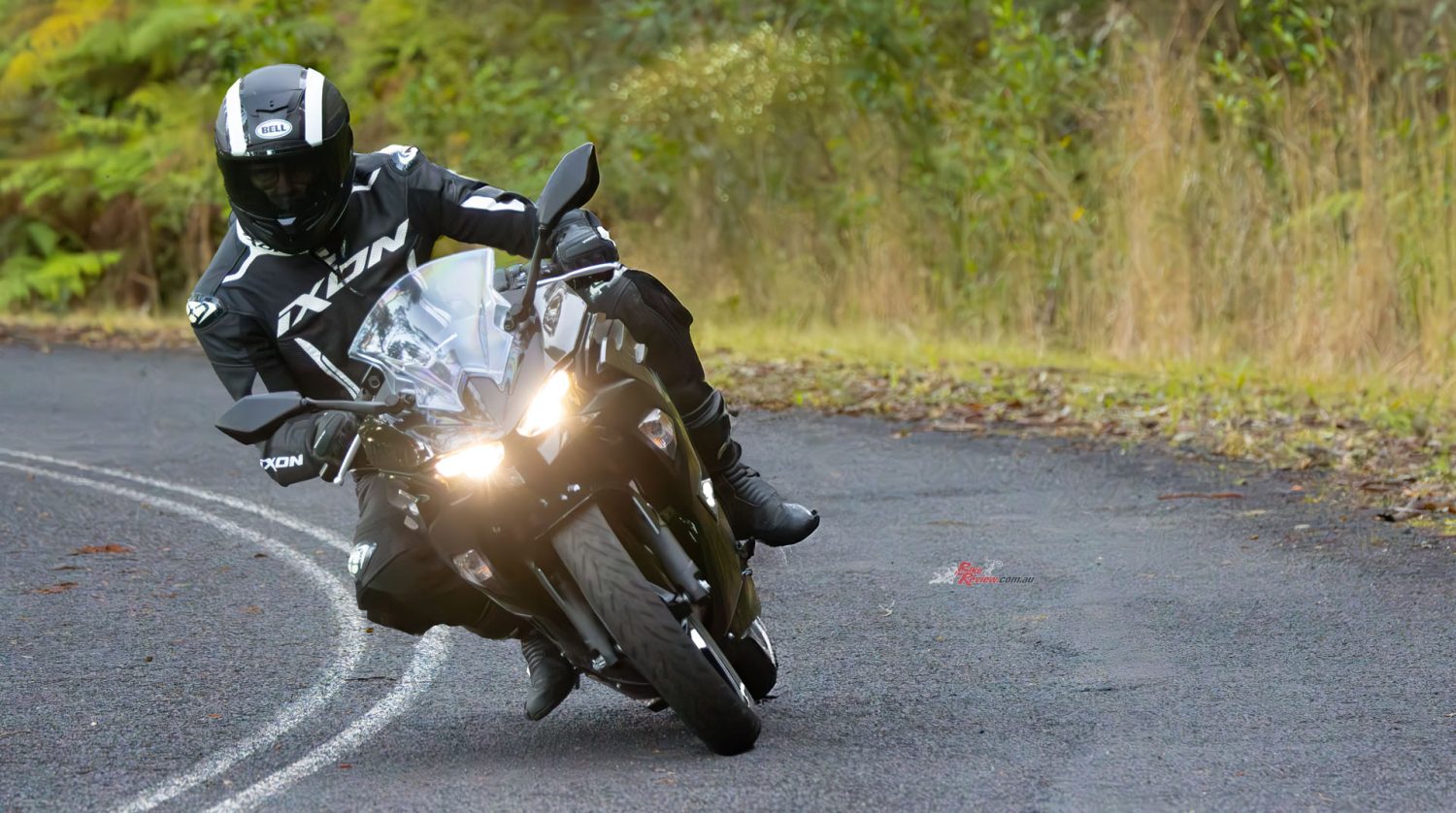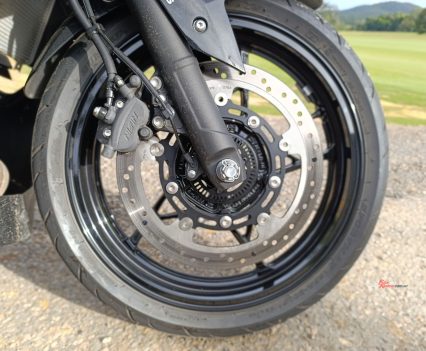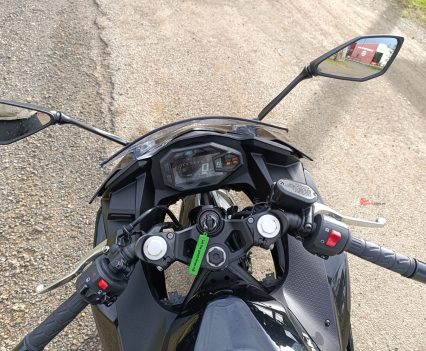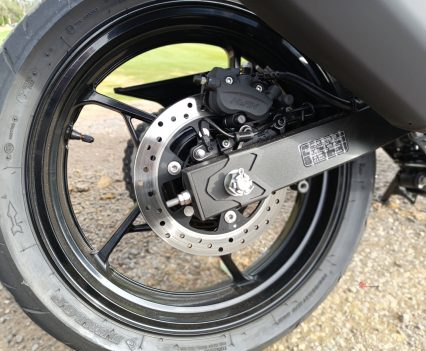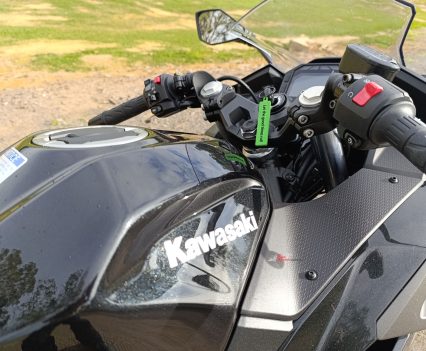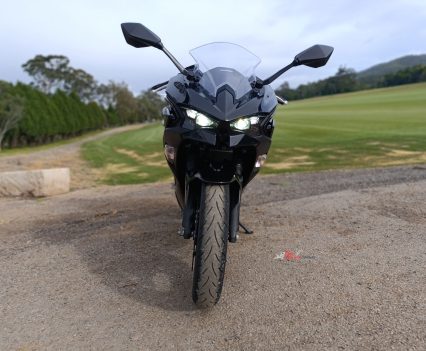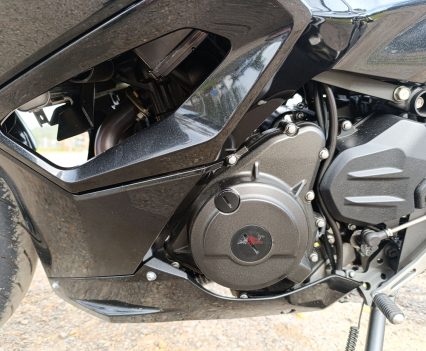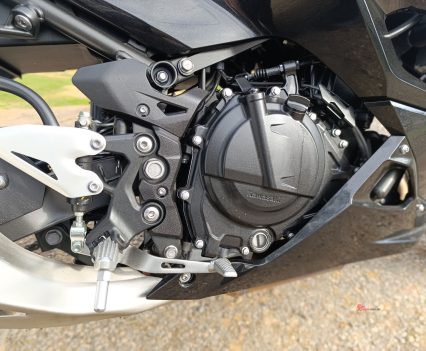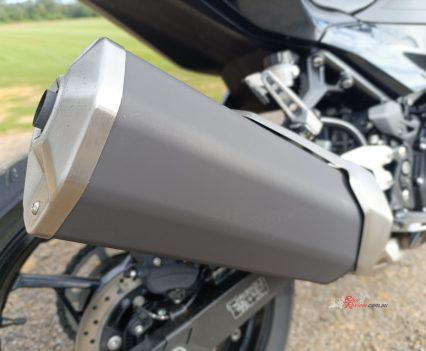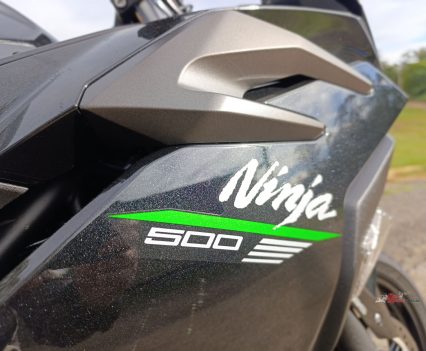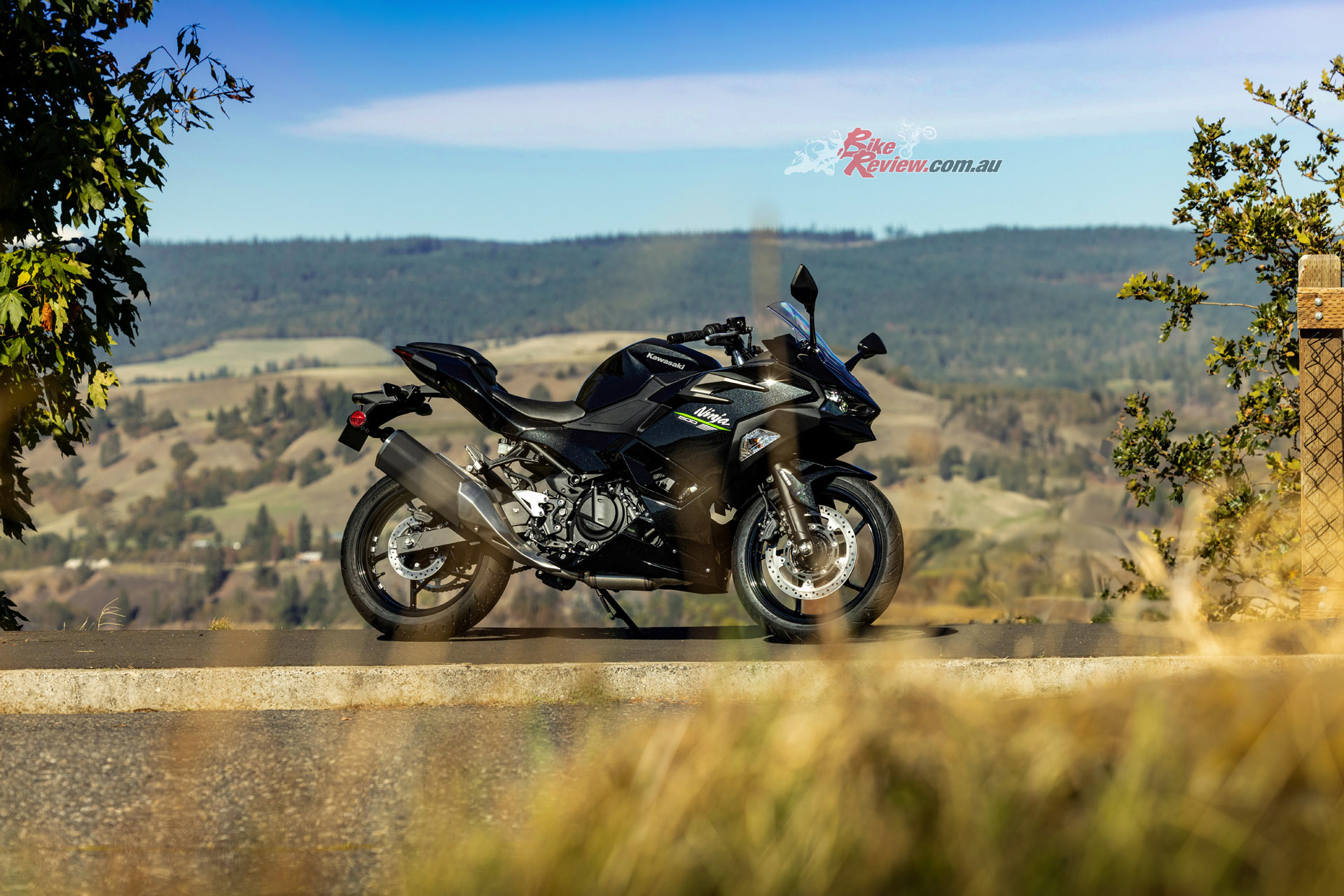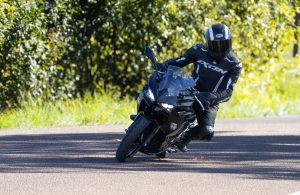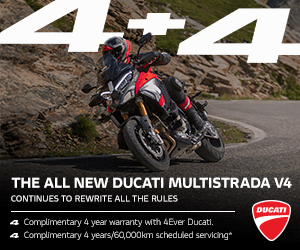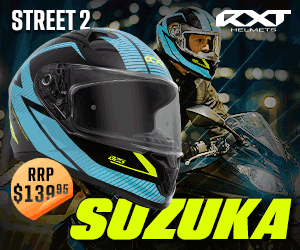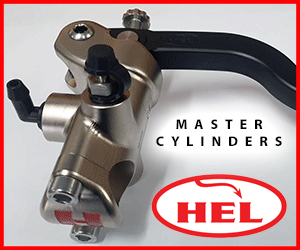Experience that goes back to the GPx250 and ZZR250 has evolved into double the capacity. Is the Ninja 500 the pinnacle of Kwaka parallel twin LAMS sportsbikes? Test time. Pics: Graham Bain
I’d just handed back the Kawasaki Eliminator that shares the same gem of a 451cc parallel-twin with the Ninja and that bike was a lot of fun, so shed a few kilos, add some decent ground clearance in a nice sharp handling chassis and Kawasaki must be on to a winner!
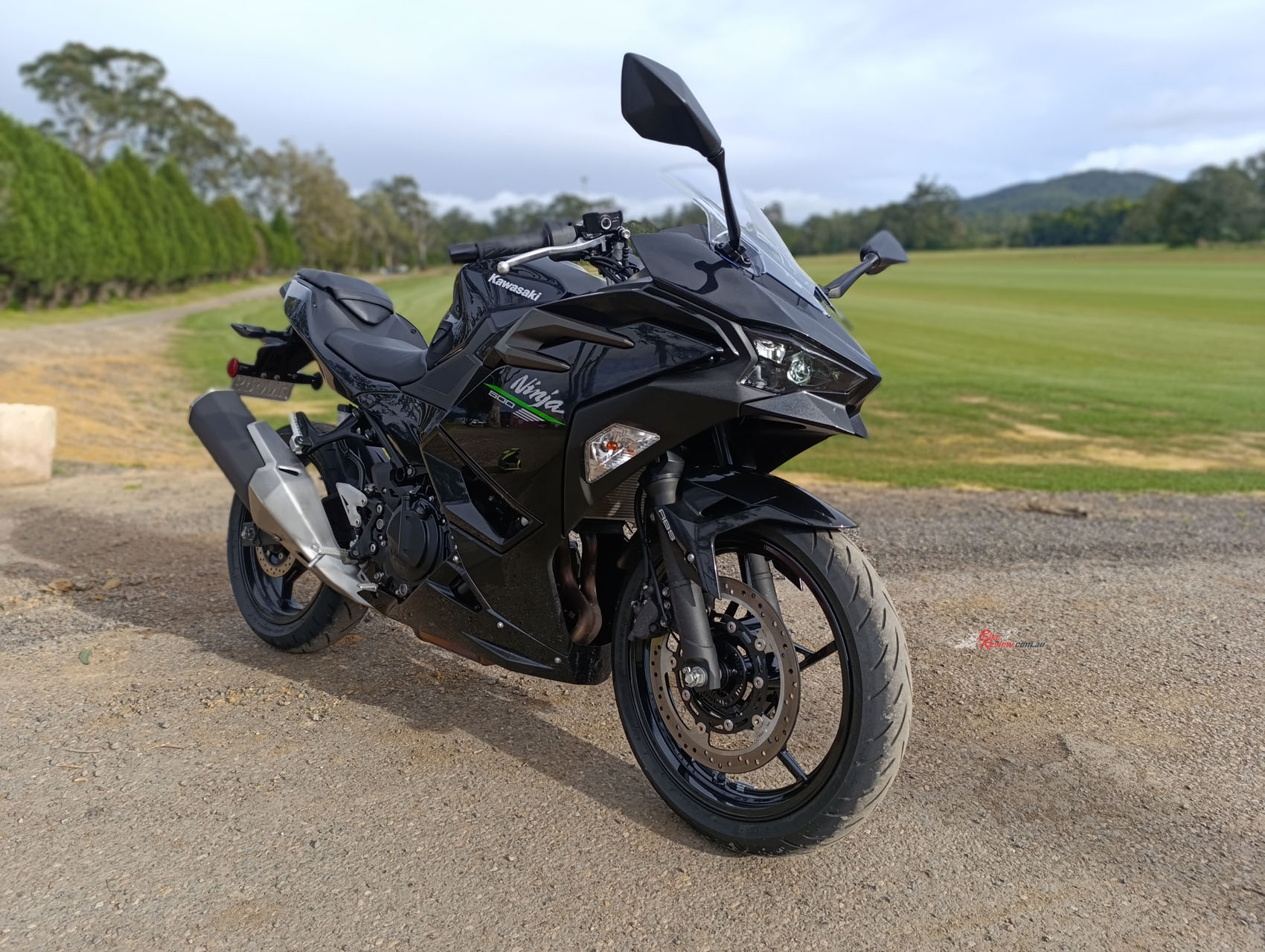
The 2025 Kawasaki Ninja 500 comes in at just over nine grand ride away ex Sydney. It comes in Metallic Spark Black/Metallic Flat Raw Greystone, Metallic Matte Whitish Silver/Metallic Moondust Grey.
The bike I’m testing is the standard model and at $9,078 ride away ex Sydney it’s an absolute bargain. However, there’s also a Special Edition (SE) model that comes in a more racy Kawasaki 40th anniversary livery and really looks the part, for $10,314 – an extra $1236.
With the SE you also get a TFT dash, KIPASS (Kawasaki’s Intelligent Proximity Activation Start System), a USB-C outlet, a larger windshield, pillion seat cover, LED turn signals, frame sliders, tank pad, knee grip pads, and a radiator screen so it’s pretty good value.

There’s also a Special Edition (SE) model that comes in a more racy Kawasaki 40th anniversary livery and really looks the part, for $10,314, which is a $1236 ex Sydney premium over the base model we tested.
Whatever model you go for, Kawasaki have done a good job of giving us a well built bike for the price. However, when building a bike like this you do have to make compromises, like non-adjustable levers, non-adjustable front suspension and only pre-load adjustability on the rear and basic electronic features. Does this detract from the bike being fun to ride? I sling a leg over to find out…
Design & Ergonomics
The Ninja 500 looks sharp and purposeful and doesn’t look out of place wearing the Ninja logo, with its modern aggressive fairing and headlights. When I sit on the bike I can easily plant both my feet on the ground with my knees slightly bent, but I’m 180cm tall, either way, I can’t really see an issue for smaller riders with its seat height of 785mm.
The ergonomics feel good, with a fairly roomy cockpit for a small bike and the seat to ‘bar to ‘peg triangle being comfortable. You do feel like you’re sitting on something sporty, but not aggressive enough to be uncomfy, mainly because of the ‘bars being set higher than a full-on sportsbike.
The Ride
Turning the key I’m greeted with a simple yet very clear black LED dash, that looks great, is well laid out and has everything you really need on a bike like this. You don’t get a whole load of electronic features such as different maps, lean angle sensors and things like that, but at this price you wouldn’t expect them. Kawasaki have kept things pretty simple, but you do get an assisted slipper clutch and ABS brakes.
“Kawasaki have kept things pretty simple, but you do get an assisted slipper clutch and ABS brakes”…
I hit the start button and the little 451cc parallel-twin comes to life with a rather muted exhaust note. The first thing that comes into my mind is how good it could sound with an aftermarket exhaust fitted, although my neighbours may not agree… While the bike warms up, I spend a bit of time with a hex key adjusting the levers and checking the tyre pressures, basically checking over the whole bike, this is something I always do for my own safety, with every brand and every bike I test.
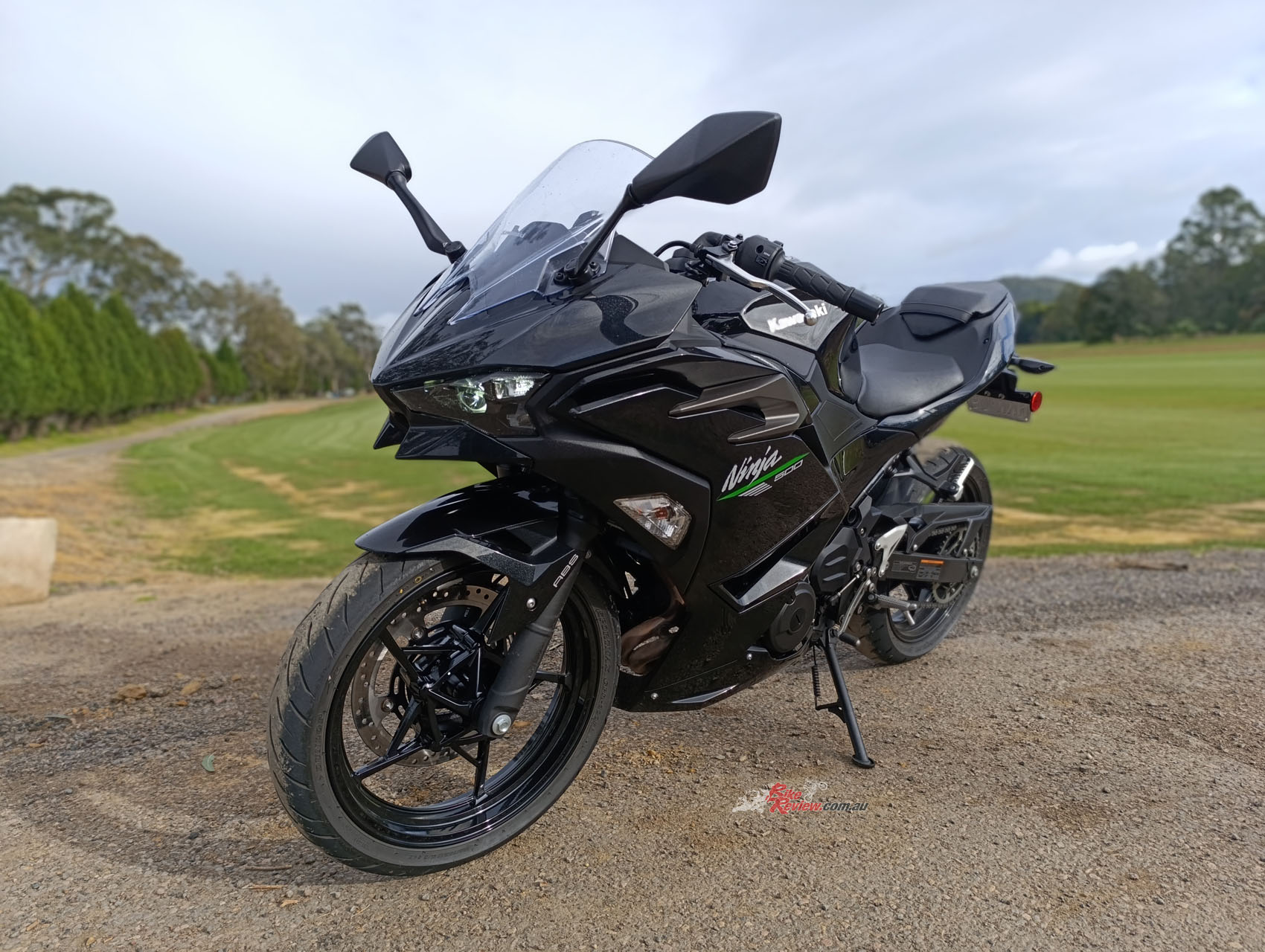
“The ergonomics feel good, with a fairly roomy cockpit for a small bike and the seat to ‘bar to ‘peg triangle being comfortable”.
Once I’m geared up, I select first and I’m off up the road. The first thing I notice is how light the bike feels. I knew it would be because I’d been pushing it around my shed and driveway, but at only 171kg curb mass, it feels as light as my little Yamaha RD350LC two-stroke that I normally ride. I head out of my street and up the main road, clicking up though the gears, the gearbox is a joy to use as is the super lightweight clutch, it is silky smooth.
“The gearbox is a joy to use as is the super light clutch”…
I’d previously ridden the Kawasaki Eliminator with the same engine, but in this lighter more agile bike, the motor feels even better. I’m not sure if the Ninja uses the same fuelling map as the Eliminator, but it just feels stronger. Gearing is identical.

“Kawasaki have done a great job in getting the suspension’s spring rates and valving pretty well sorted for the Ninja 500”.
The Ninja still prefers to be short-shifted rather than revved to the redline, but this is no bad thing, because there is plenty of torque down low. The little Ninja is quite happy pulling away from 60km/h in top gear and if you ride the torque curve correctly, keeping it between 4500rpm and 7500rpm the bike is pretty quick (relatively speaking). You can take the motor all the way to the 11,000rpm redline but like I said most of the fun is lower in the rev-range.
On the freeway the bike has enough grunt to cruise all day at the speed limit and plenty more speed left in the tank should you need it, so you don’t have to ring its neck, it’s geared pretty well too and sits on a calm 6000rpm at 110km/h. The mirrors are pretty wide and offer great vision behind and don’t get too blurry even at higher speeds, however, with them protruding the handlebars you do have to be mindful with lane splitting, something this bike is good at.
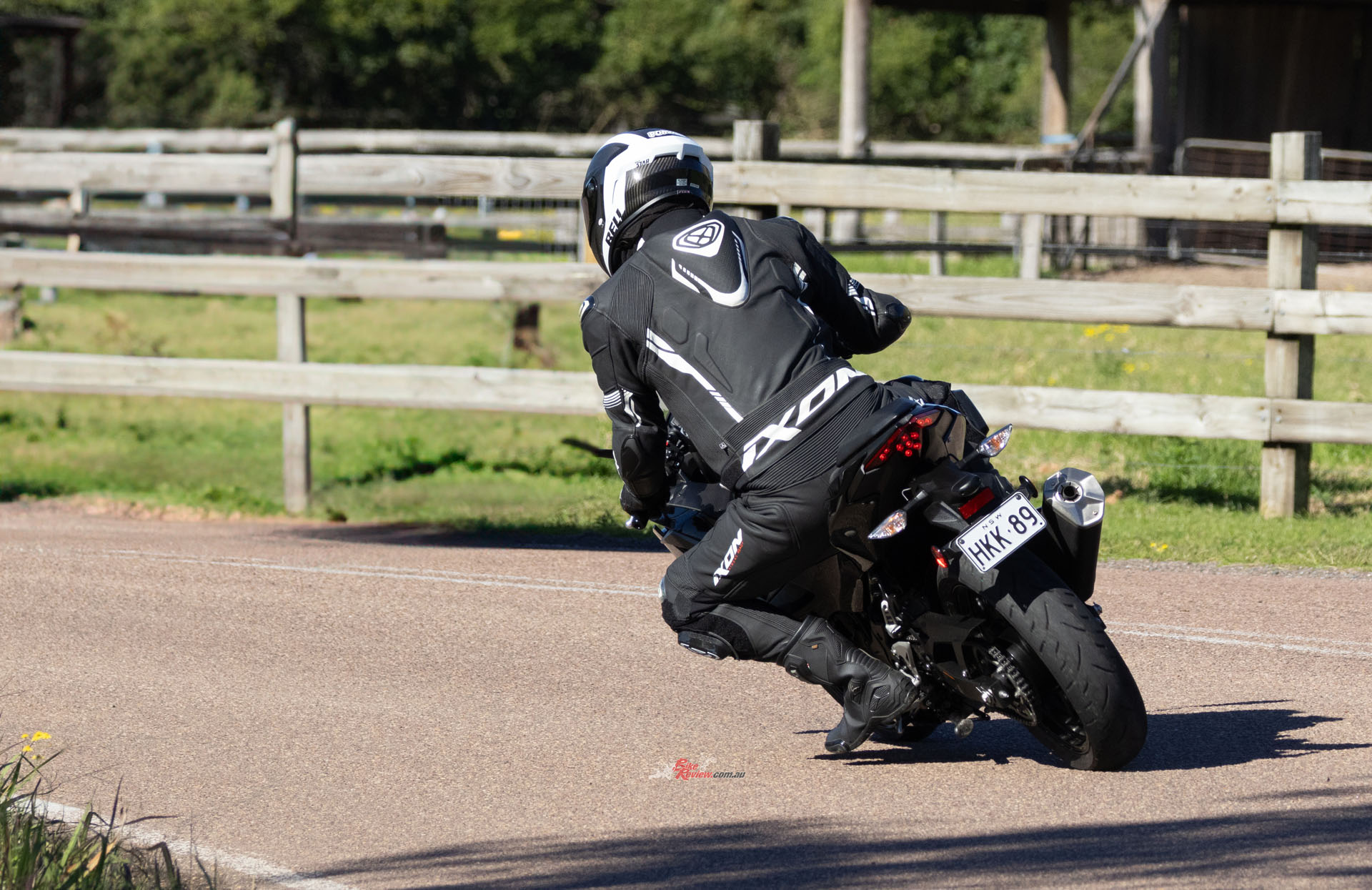
“Ninja has the lowdown grunt to propel me out of a corner and short shifting through the gearbox yields the best result and the most fun”.
In fact, this bike would make a great commuter, it’s really efficient. When I filled the bike up I’d clicked up 268km and still had an estimated 58km of range left so that’s not bad with only a 14 litre tank and the type of riding that I was doing. With the little Ninja having a fairing screen it also pushes a fair bit of wind and weather off my chest at those higher freeway speeds, I also get a couple of opportunities to ride in the dark and I can testify to how good the headlights are, which is alway a bonus.
Commuting is one thing, but on a twisty road is where this bike belongs. Kawasaki have done a great job in getting the suspension’s spring rates and valving pretty well sorted for the Ninja 500, it actually leans more towards the sporty side than I’d of thought.. Yes, you don’t have any adjustment apart from rear preload, but that’s OK, because this bike is a pretty good balance of being sporty without being over harsh and it’s definitely not soft and wollowy like I’d of imagined a lower price bike to be, so hat’s off to Kawasaki here.
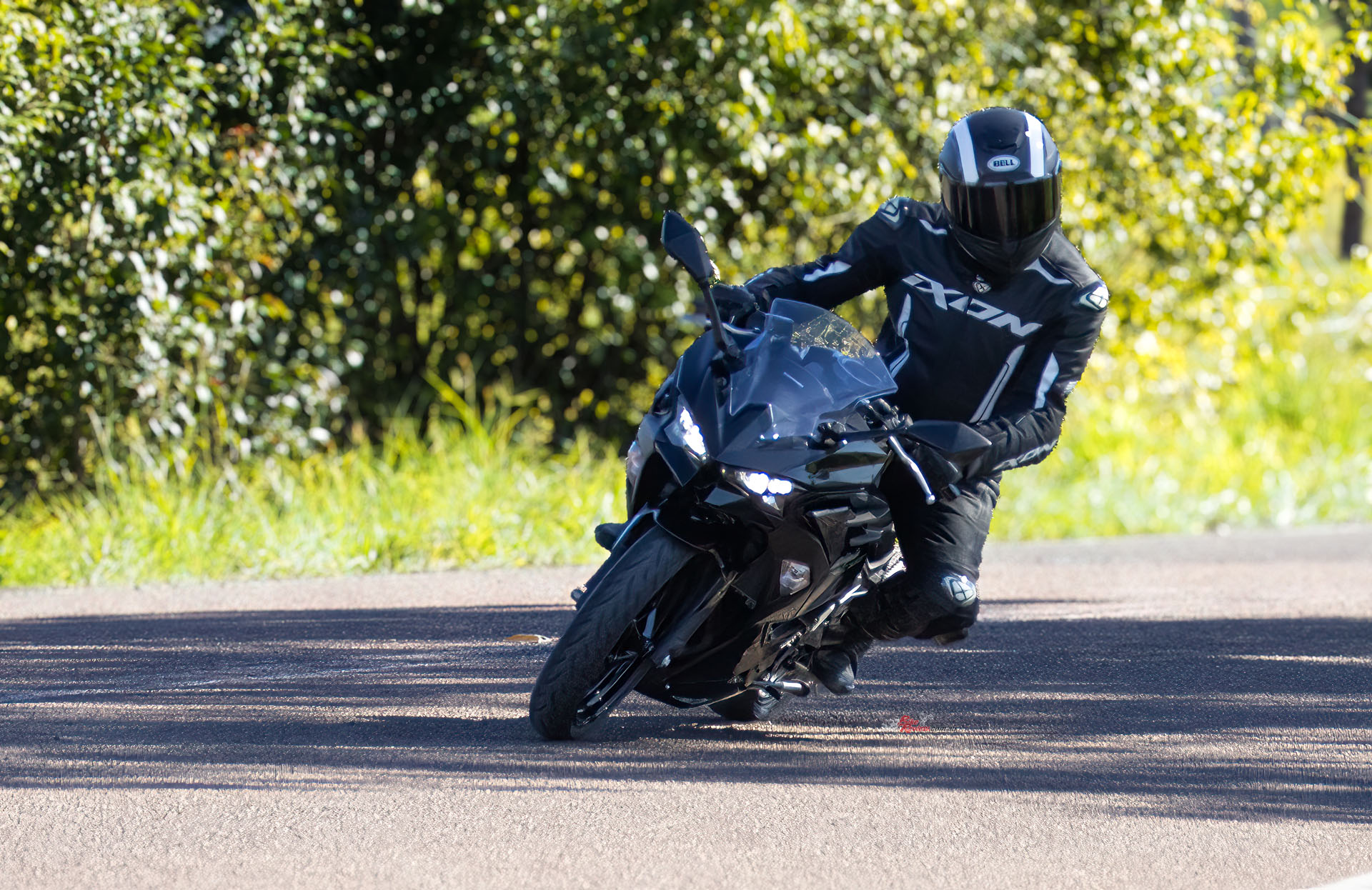
“The Ninja also has plenty of ground clearance too so scraping the ‘pegs should not be an issue, unless you head to a racetrack”…
In fact, on these twisty roads the bike really shines where you don’t need the massive power of a 1000cc bike to have fun. Because the bike is light and agile and changes direction really well, I find I can keep my corner speed up, a bit like I do when riding my two-stroke RD. However, unlike my bike the Ninja has the lowdown grunt to propel me out of a corner and short shifting through the gearbox yields the best result and the most fun.
The quick change of direction is no doubt helped by the smaller tyres, a 110/70 front and 150/60 rear, and light wheels, which help reduce the unsprung mass. This is good, but it does have the drawback of getting slightly unsettled if you hit a rough surface mid corner, it’s just one of those things you accept when riding a lightweight bike.
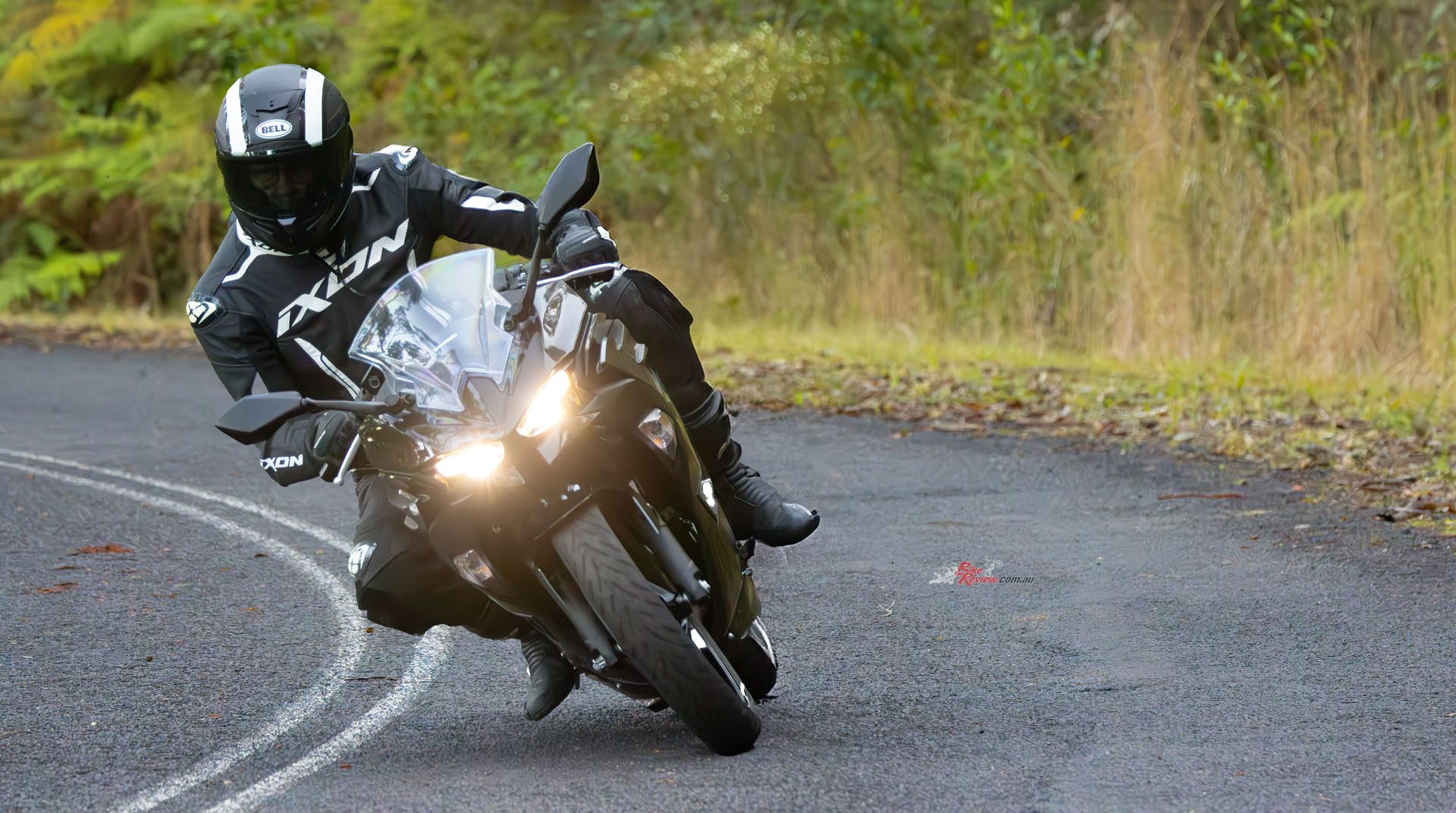
If you’ve never ridden a small light bike like this, do yourself a favour and book in for a decent test ride.
The Ninja also has plenty of ground clearance too so scraping the ‘pegs should not be an issue, unless you head to a racetrack. The brakes are pretty good too, you get a single 310mm wave rotor with a twin-piston Nissin caliper up front and a 220mm rotor and twin-piston caliper at the back, with a conventional master-cylinder, and they do the job pretty well of giving ample feel and power on this small bike without the ABS being too intrusive, so I had no complaints there.
Conclusion
If you’ve never ridden a small light bike like this, do yourself a favour and book in for a decent test ride, you’ll be surprised how much fun this little Kwaka is to ride on a twisty road. No, you don’t have the crazy horsepower of a big bike, but for a LAMS bike it’s more than enough and if you’re a good enough rider nobody will be getting away from you on a twisty road…
2024 Kawasaki Ninja 500 Specifications
Price: From $9,078 Ride Away ex Sydney
Warranty: Two-year, unlimited kilometre
Colours: Metallic Spark Black/Metallic Flat Raw Greystone, Metallic Matte Whitish Silver/Metallic Moondust Grey
Claimed power: 33.4kW@9000rpm
Claimed torque: 42.6Nm@6000rpm
Curb weight: 171kg
Fuel capacity: 14L
Fuel Consumption (measured): 4L/100km
Engine: Liquid cooled, parallel twin-cylinder, four-stroke, 8-valve, DOHC, 451cc, 11.3:1 compression ratio, 70.0 x 58.6mm bore and stroke, single injector per cylinder, 32mm throttle-bodies, six speed constant mesh gearbox, wet, multi-plate clutch with dual action slipper clutch, cable actuation, 14/43 final gearing, chain drive.
Chassis: High-tensile steel tube trellis frame with engine as fully stressed member, box-section steel swingarm, Rake: 24.5°, Trail: 92mm, Steering angle 35º/35º
Suspension: 41mm fork, 120mm travel, Unitrack gas-charged rear shock absorber, preload adjustable, 130mm travel. Brakes: Single Nissin 310mm semi-floating front disc, two-piston caliper, Nissin 220mm rear disc, two-piston caliper. Nissin ABS Wheels & Tyres: Aluminium alloy, 110/70 – 17 (f), 150/60 – 17 (r)
Dimensions:
Wheelbase: 1375mm
Seat height: 785mm
Overall length: 1995mm
Overall width: 730mm
Overall height: 1120mm
Ground clearance: 145mm
Instruments & Electronics: Digital LCD display with smartphone connectivity, ABS.
Ratings! | Bike Review | 2024 Kawasaki Ninja 500 LAMS Sportsbike


